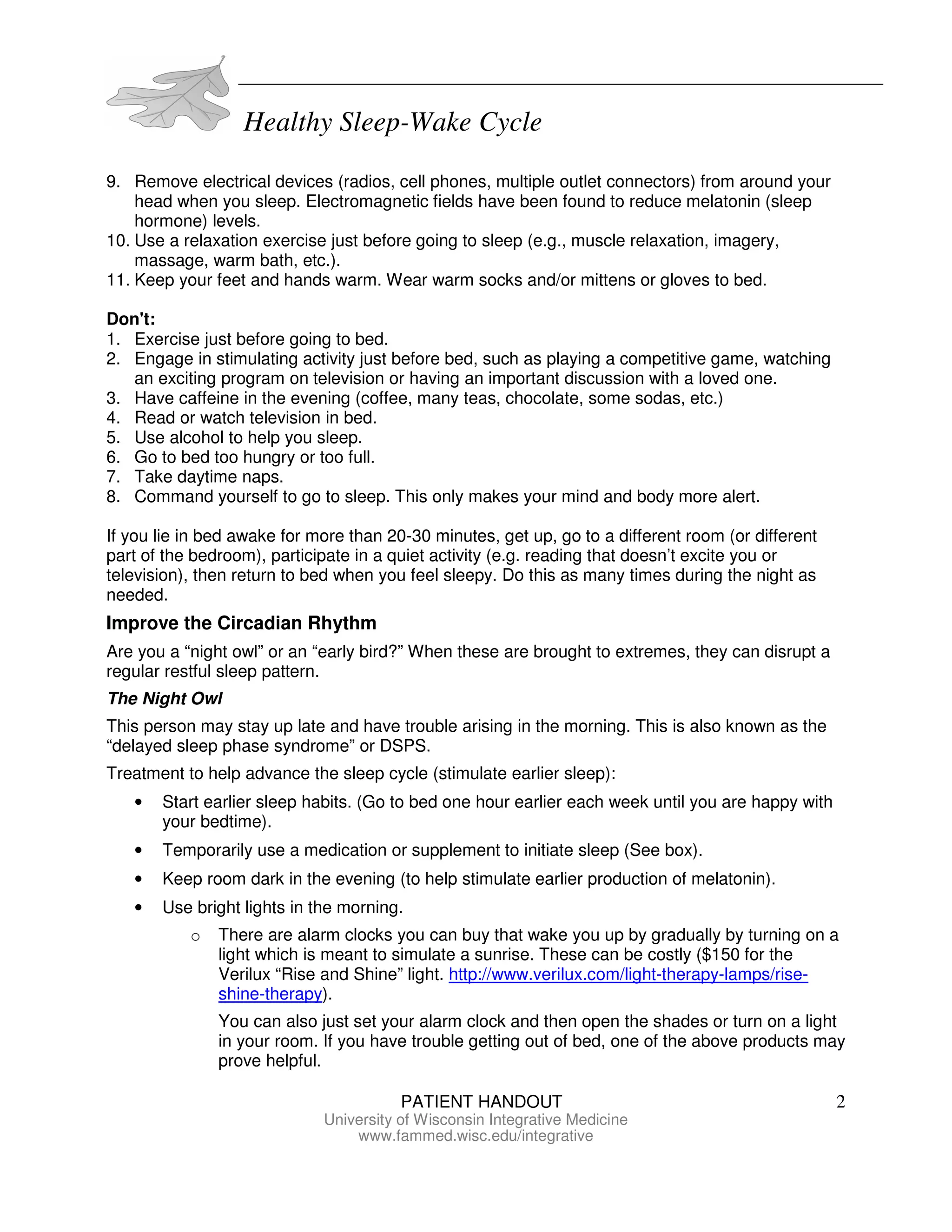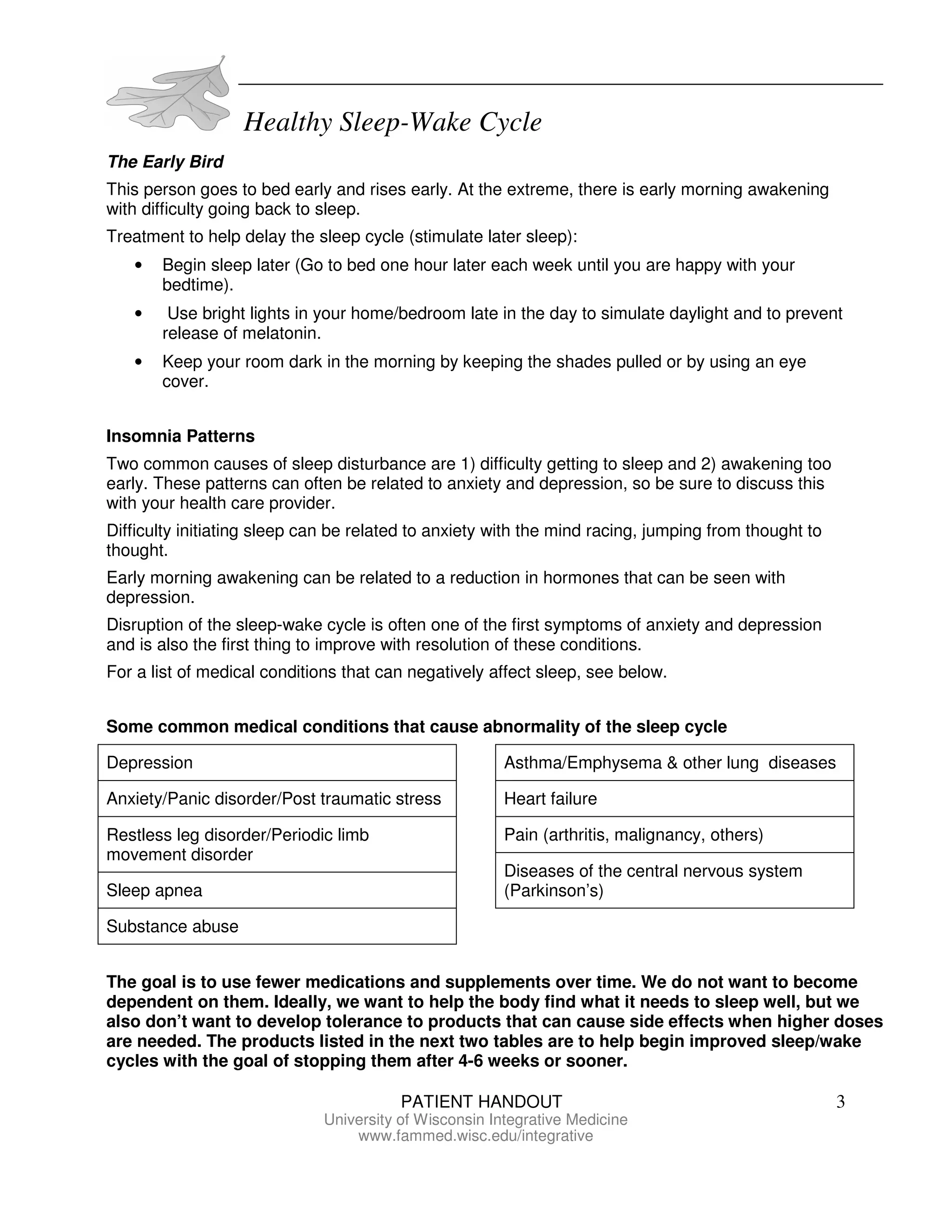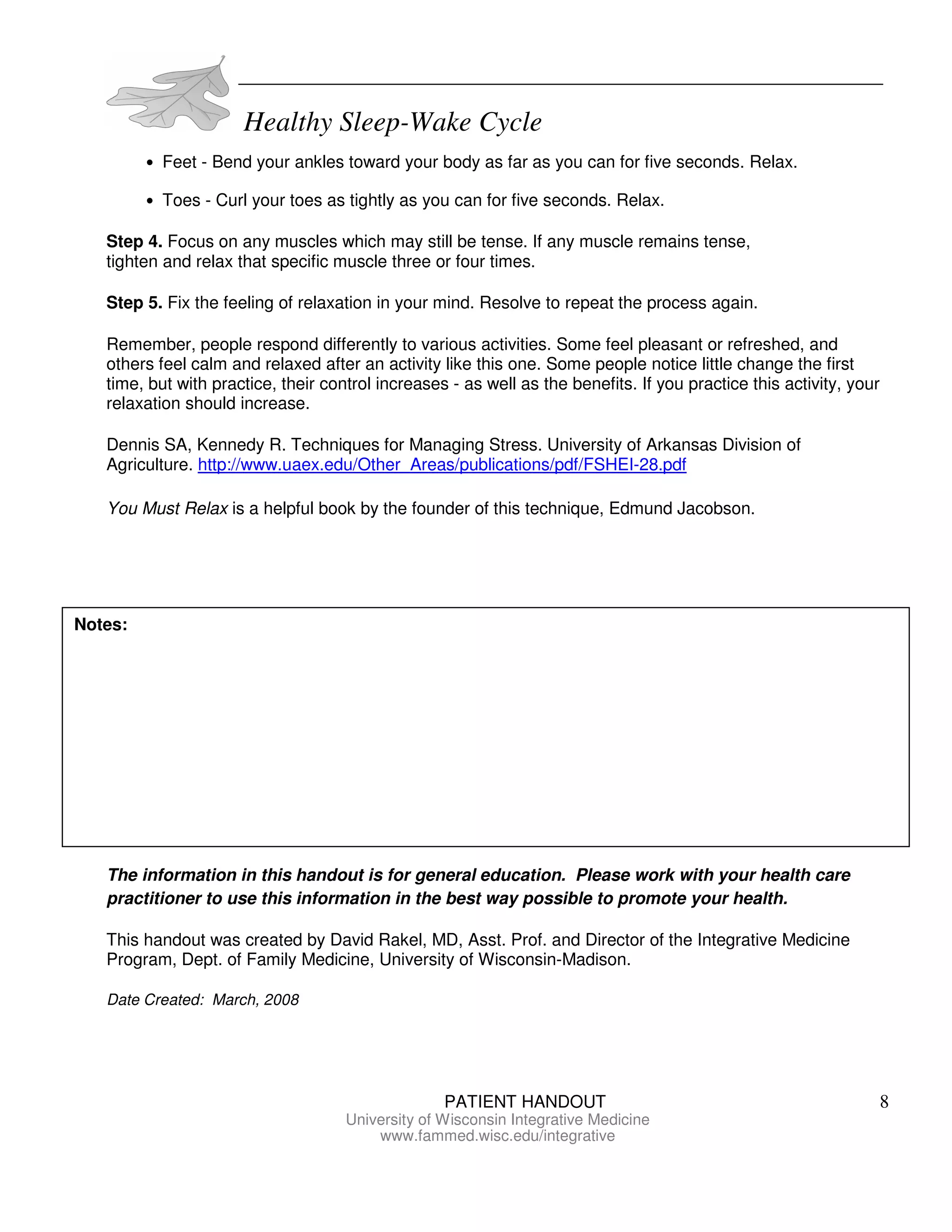This document provides information and recommendations for improving sleep quality and maintaining a healthy sleep-wake cycle. It discusses removing barriers to sleep, improving sleep hygiene through lifestyle habits, and techniques for initiating and maintaining sleep such as relaxation exercises, supplements, and prescription sleep aids. The goal is to use lifestyle changes and natural remedies to improve sleep before relying on medications.







